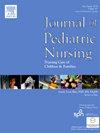Identification of risk factors and incidence of non-tunnelled central venous catheter occlusion in pediatric intensive care unit: A retrospective cohort study
IF 2.3
4区 医学
Q2 NURSING
Journal of Pediatric Nursing-Nursing Care of Children & Families
Pub Date : 2025-07-23
DOI:10.1016/j.pedn.2025.07.016
引用次数: 0
Abstract
Background
Non-tunnelled central venous catheter (CVC) occlusion represents a significant clinical challenge in pediatric intensive care units (PICUs), emphasizing the need for improved understanding of its incidence and risk factors.
Purpose
This study aimed to investigate the incidence and risk factors for non-tunnelled CVC occlusion among critically ill children.
Design and methods
This retrospective cohort study was conducted in a single PICU in China. The medical records of 648 critically ill children admitted between January 1, 2019 and June 30, 2021 were analyzed. Variables assessed included non-tunnelled CVC occlusion events, demographic data, treatment information, biochemical parameters, and CVC characteristic. Univariate and stepwise multiple logistic regression analysis were performed to identify independent risk factors of occlusion.
Results
The participants ages ranged from 1 to 198 (median:28 months) months, with 59.25 % (n = 384) being male. The incidence of non-tunnelled CVC occlusion was 15.6 % (22.8 per 1000 catheter-days). In multiple logistic regression analysis, independent risk factors included the use of analgesia or sedation medicines, and elevated D-dimer values. Conversely, infusion rates exceeding 10 mL/h emerged as a protective factor.
Conclusions
Non-tunnelled CVC occlusion remains a significant concern in the PICU population. Modifiable risk factors, including the use of analgesia or sedation medicines and D-dimer values were associated with occlusion, while higher infusion rate was a protective factor. These findings can inform evidence-based strategies to minimize CVC occlusion in critically ill children.
Implications to practice
Nurses can identify children at high risk of non-tunnelled CVC occlusion, and targeted measures can be applied to avoid the adverse effects of occlusion. The measures include minimizing the use of sedative and analgesic medicines, monitoring coagulation parameters, and adjusting infusion rates to the extent feasible.
儿童重症监护病房非隧道中心静脉导管阻塞的危险因素和发生率的确定:一项回顾性队列研究
非隧道中心静脉导管(CVC)闭塞是儿科重症监护病房(picu)的一个重大临床挑战,强调需要提高对其发病率和危险因素的了解。目的探讨危重患儿非隧道性CVC闭塞的发生率及危险因素。设计和方法本回顾性队列研究在中国的一个PICU进行。分析2019年1月1日至2021年6月30日收治的648例危重患儿的医疗记录。评估的变量包括非隧道性CVC闭塞事件、人口统计学数据、治疗信息、生化参数和CVC特征。采用单因素和逐步多元logistic回归分析确定闭塞的独立危险因素。结果参与者年龄1 ~ 198个月(中位28个月),男性占59.25% (n = 384)。非隧道性CVC闭塞发生率为15.6%(22.8 / 1000导管天)。在多元logistic回归分析中,独立危险因素包括使用镇痛或镇静药物,以及d -二聚体值升高。相反,输注速度超过10 mL/h成为保护因素。结论非隧道性CVC闭塞在PICU人群中仍然是一个值得关注的问题。可改变的危险因素,包括使用镇痛或镇静药物和d -二聚体值与闭塞有关,而较高的输注率是一个保护因素。这些发现可以为危重儿童减少CVC闭塞提供循证策略。对实践的启示护士可以识别非隧道性CVC闭塞的高危儿童,并采取有针对性的措施来避免闭塞的不良影响。这些措施包括尽量减少镇静和镇痛药物的使用,监测凝血参数,并在可行的范围内调整输液速率。
本文章由计算机程序翻译,如有差异,请以英文原文为准。
求助全文
约1分钟内获得全文
求助全文
来源期刊

Journal of Pediatric Nursing-Nursing Care of Children & Families
NURSING-PEDIATRICS
CiteScore
3.70
自引率
8.30%
发文量
291
审稿时长
65 days
期刊介绍:
Official Journal of the Society of Pediatric Nurses and the Pediatric Endocrinology Nursing Society (PENS)
The Journal of Pediatric Nursing: Nursing Care of Children and Families (JPN) is interested in publishing evidence-based practice, quality improvement, theory, and research papers on a variety of topics from US and international authors. JPN is the official journal of the Society of Pediatric Nurses and the Pediatric Endocrinology Nursing Society. Cecily L. Betz, PhD, RN, FAAN is the Founder and Editor in Chief.
Journal content covers the life span from birth to adolescence. Submissions should be pertinent to the nursing care needs of healthy and ill infants, children, and adolescents, addressing their biopsychosocial needs. JPN also features the following regular columns for which authors may submit brief papers: Hot Topics and Technology.
 求助内容:
求助内容: 应助结果提醒方式:
应助结果提醒方式:


